Here’s an easy way to make your garden more environmentally friendly: how to make a bee house for mason bees.
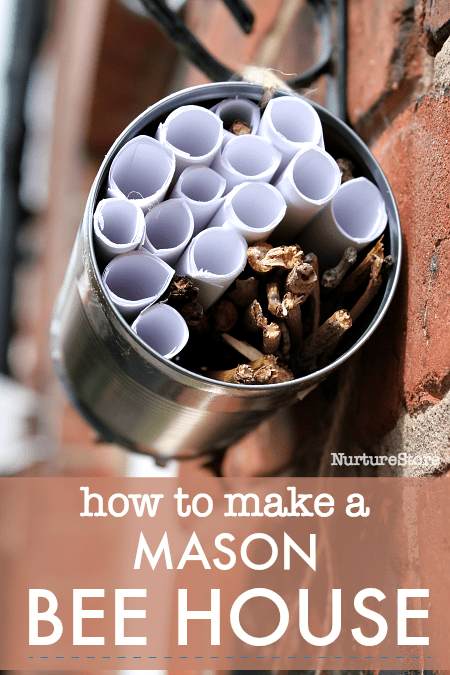
How to make a simple bee house for mason bees
One of the types of bees common in the UK and US is the mason bee. Let’s learn about mason bees and how we can support these important pollinators.
What are mason bees?
Mason bees are solitary bees who live in holes rather than hives. They don’t live in colonies with a queen, but instead live alone.
They are peaceful bees. The male mason bee has no stinger, and the female mason bee only stings if trapped or squeezed, so they are a great friendly bee to encourage into your garden.
Mason bees are smaller than honey bees and can be metallic blue or blue-black in colour. In the UK red mason bees are common.
Mason bees are important pollinators and encouraging them in your garden will mean more flowers, fruits and vegetables.
Where do mason bees live?
Mason bees build little nests and lay their eggs inside. They seal up their nest with a mortar-like ‘door’ made of mud.
Mason bees can’t dig out their own nest space so they make use of places that are already open. In the wild mason bees use hollow stems and insect holes. In our garden we can support the important mason bee population by making a mason bee house.

How to make a simple bee house
:: hollow bamboo canes
:: paper
:: pencils
:: tape
:: paper rolls from kitchen rolls/toilet rolls (optional)
:: garden string
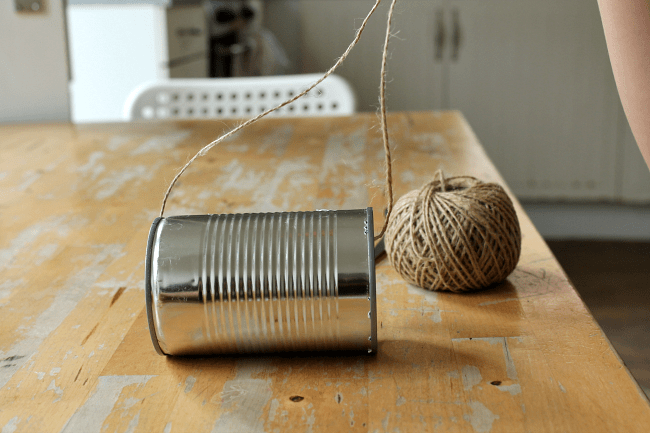
Start by choosing a frame. You can buy or make a wooden frame, or use a tin can open at both ends. If you’re using a can be sure that all the edges are smoothed down and can’t cut anyone.
Thread through a length of garden string so you’ll be able to hang up your bee hotel.
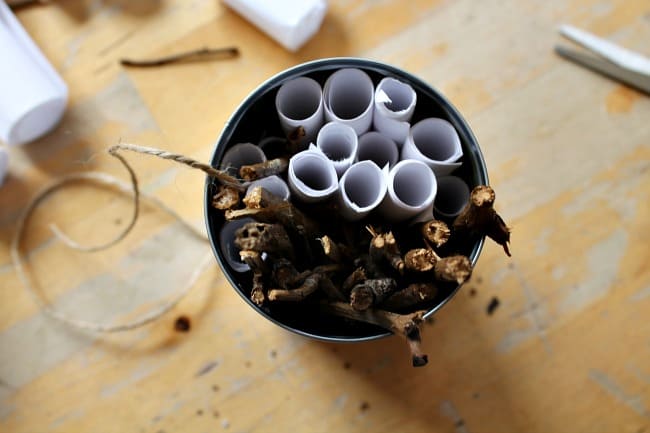
Then fill your frame.You can use hollow plant stems and bamboo canes that are empty and clean inside.
Alternatively you can use rolls of paper. Wrap sheet of paper around a pencil, making five layers in your roll so they are sturdy. You want the rolls to be about a centimetre in diameter, and you can hold them in place with a piece of tape so they don’t unroll.
You can place some larger paper rolls inside your frame to make it easier to fill. Each child could fill a large paper roll, and then you can combine everyone’s together to make a grand bee hotel.

Make your paper rolls slightly smaller than the length of your frame to give them protection from the rain.
You can also include other twigs, sticks, and straw to offer homes to other insects.

Finally, choose a location for your mason bee home. It needs to be about a metre off the ground, in an open, sunny spot. Fix your mason bee house securely so it doesn’t bump about in the wind.
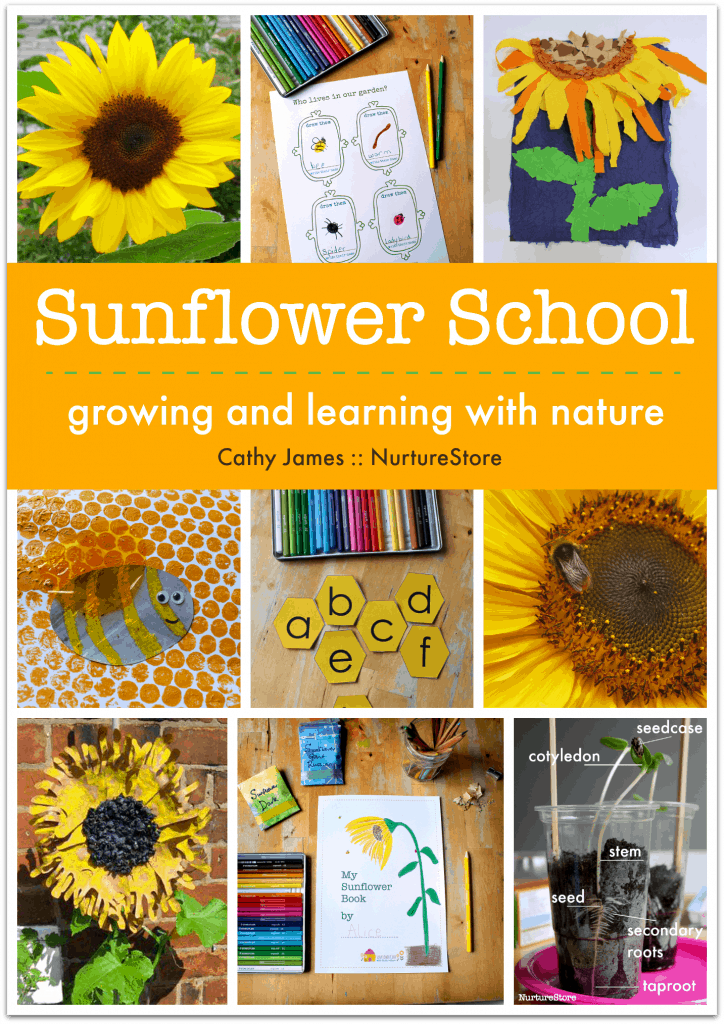
Sunflower School curriculum and printables
Click here to download your copy of the Sunflower School curriculum.
The Sunflower School curriculum matches a full programme of learning to the natural growing cycle of sunflowers.
It gives you six units of learning:
:: In the spring we’ll focus on planting and watching our plants grow.
:: In the summer we’ll learn about bees and pollination, and celebrate the gorgeous blooms through art.
:: In the late summer and early autumn we’ll turn our attention to harvesting, sustainability, and closing of the growing year.
Bonus sunflower printables
Our Sunflower School curriculum comes with 30 pages of bonus printables that you can use with your children to enrich their learning, including:
- My Sunflower Journal printable
- Lined, plain, and half-and-half journal pages
- Sunflower poems printable
- Sunflower sticker sheet
- Printable plant labels
- Sunflower counting mat
- Sunflower addition mat
- Sunflower subtraction mat
- Sunflower word mats
- Bee number cards
- Bee writing and scissor skills pages
- Garden Creatures page
- Honeycomb alphabet
- Printable seed packets
Click here to download the complete set of Sunflower School resources.


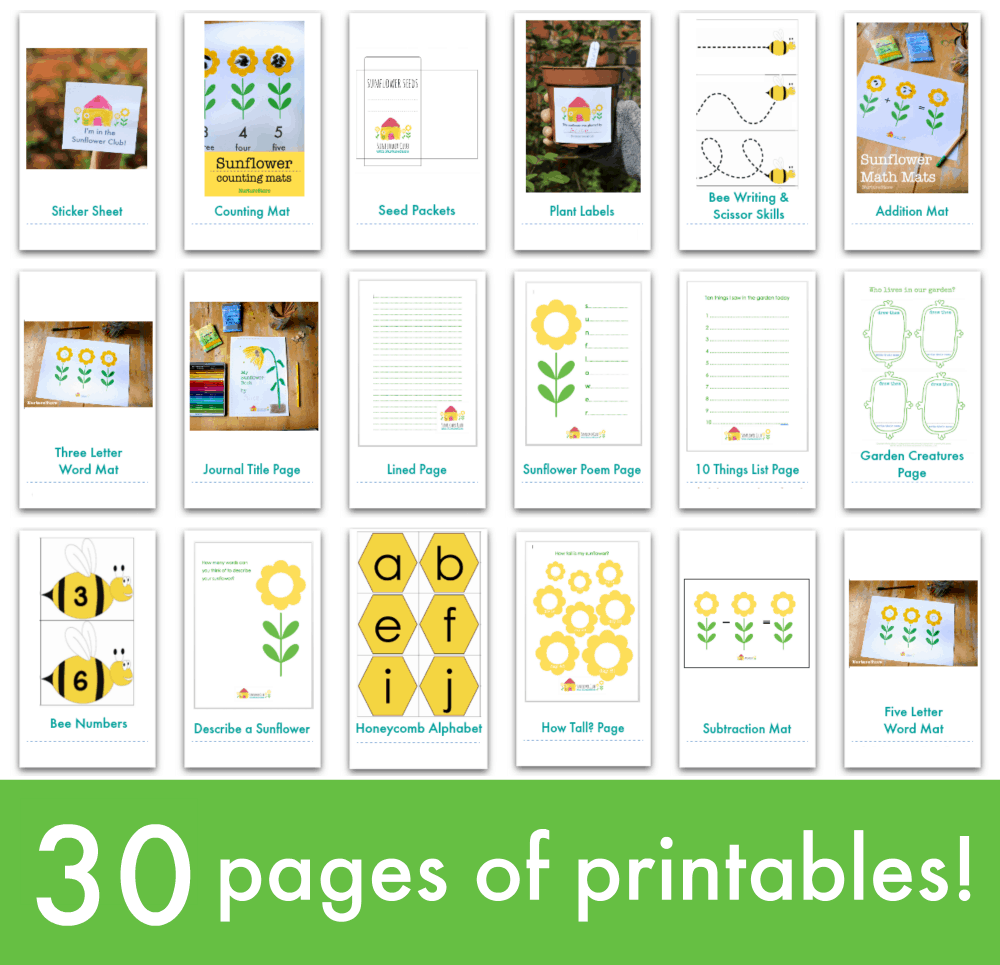

Hi – I’m making a video using the rolls of rolled up paper housed in a can or jar method like you have pictured- and I need some pictures of mason bees filling up one of those homemade houses. Do you have some shots of one of these homemade houses being filled up with eggs, etc. by the mason bees? Thank you!
Here are our videos – http://www.science-u.org
Kristian Berg – producer – WPSU Penn State
Sorry Kristian, I don’t.
I have been wanting to do something like this to encourage mason bees to help with pollination since honey bee continue to decline.Thanks for the info.
Thanks for looking after the bees Neil. It’s important work. Planting bee-friendly plants like calendula and sunflowers helps too.
Hi, I was just wondering if it mattered what time of year the bee houses were placed outside. Would it be ok to place them outside in the autumn or would they need to be taken inside over winter?
Thanks.
We leave ours out over winter so the bees can hibernate in them.
I was thinking, could straws sub for paper rolls?
Are you thinking of drinking straws? I’m not sure they would work because they might not be big enough (diameter). And plastic straws might not allow air/water to circulate in the same way?